Experiencing local life through a farm stay in Mogami
Far away from the hustle and bustle of Japanese cities, there are towns living alongside nature, eating delicious and fresh vegetables from the farm to table. How about experiencing this old-fashioned lifestyle and learning more about the local culture of Yamagata Prefecture?
Let’s head to Tozawa Village in the Mogami Area, a very local area where fields and forests fill the horizon. Here, thanks to the NPO Country Experience Private Supplementary School Tsunokawa no Sato (NPO法人 田舎体験塾つのかわの里), you can experience vegetable harvesting and a farm stay. What an amazing way to enjoy the beautiful nature of Yamagata and discover the way the locals live!
6 farmhouses are offering this experience to travelers looking for a unique memory; an excellent way to learn more about local culture and the delicious traditional food of Tozawa Village. Staying in this type of accommodation will allow you to really connect with the place, enjoying the warm hospitality of the townspeople and appreciating the meals you have as you are involved in the cooking process.
Through agricultural activities, you will learn about the seasonality of each produce and see the amount of work put in to create your meal, understanding how important it is to be conscious of our food choices in daily life.
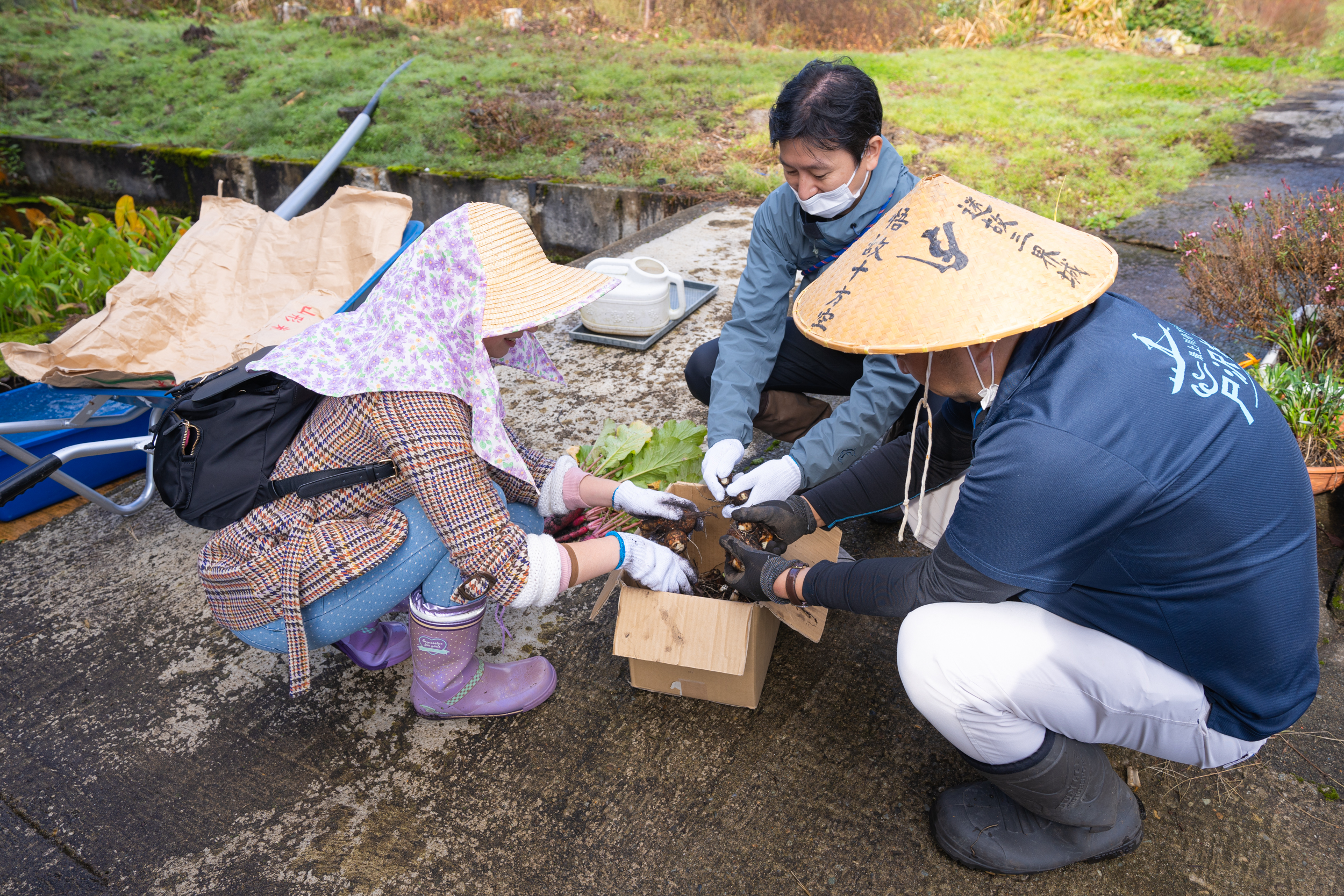
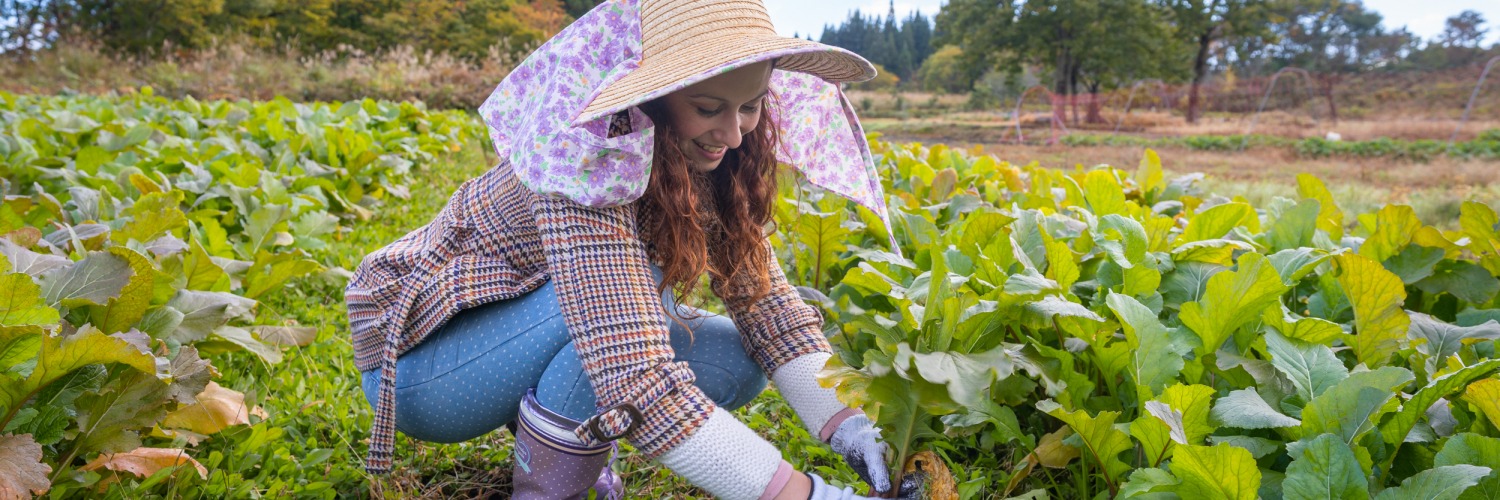
Harvesting Experience
In every season you can experience the harvesting experience in the fields of Mogami.
Autumn is the time for harvesting satoimo(Japanese Taro, similar to potato) and kabu(Japanese turnip), two ingredients widely used in the culinary tradition of Yamagata.
Satoimo, or Japanese Taro, is a starchy root crop high in fiber and with lower calories than regular potatoes. They are widely used in home-cooked and traditional Japanese dishes, especially during the colder season. Harvesting satoimo is quite challenging! A single plant provides a decent number of taro, so you might have enough taro for your meal with just one plant.
To harvest satoimo, first you must dig around the produce wide enough to not hit the roots. Then, you need to pull it to extract it from the ground, then shake it to remove the soil, then collect the satoimo one by one from the roots.
The next step will be at the farm, where you carefully clean the satoimo before peeling them and proceed to cook them.
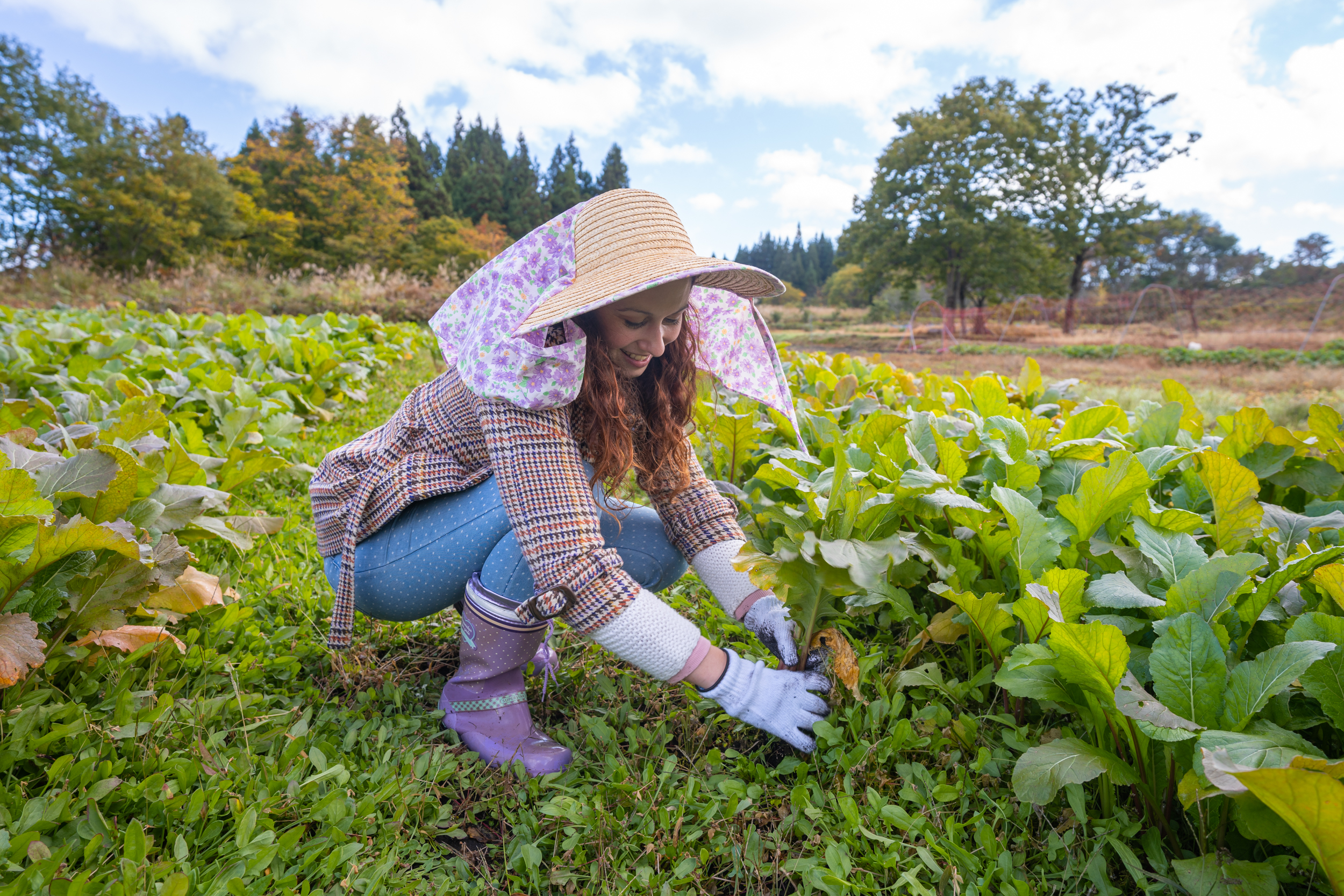
Another autumn vegetable you can harvest is kabu, the Japanese turnip, a very versatile food in Japanese cuisine.
Harvesting turnip is way easier than taro, since you just need to pull them out of the ground. The tricky part is searching which turnip is ready for harvest! Luckily, you can easily guess which turnip is ready by checking the size of the top part of the turnip hidden by its green leaves.
Kabu can be prepared in different ways: sliced in thin discs and tossed in salads, added to soups, steamed, or roasted. Kabu is also enjoyed pickled (as Tsukemono) and in winter as a comfort food, so you have many opportunities to taste them in different ways.
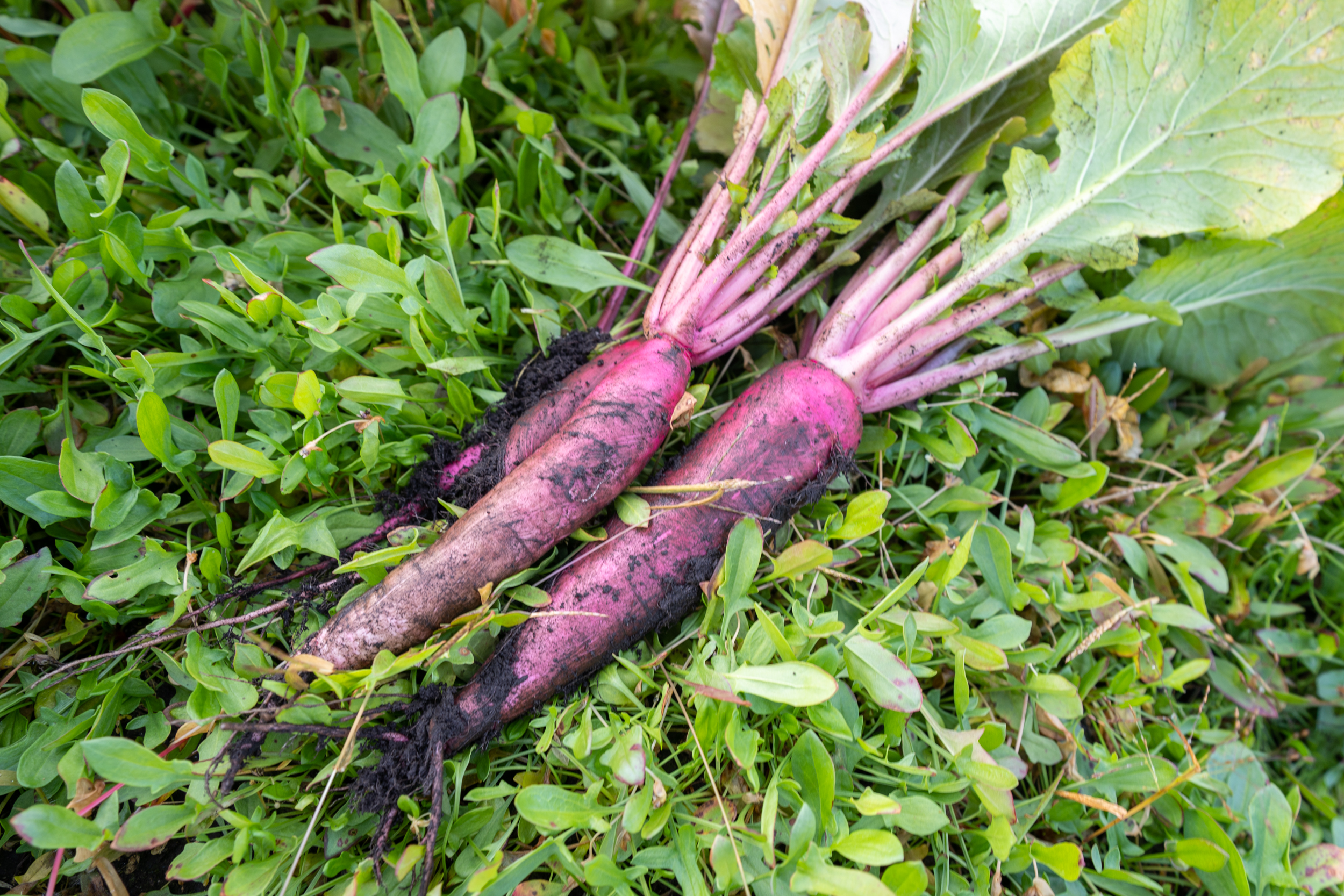
Farm Stay in the Japanese Countryside
Friendly hosts like Chiyoko-san welcome you into their house, providing a unique family experience in the countryside.
We prepared the dinner together with the freshly harvested ingredients, and I learned how to cook home-style Japanese dishes before enjoying a heart-warming meal with each other.
Experiencing a farm stay is like having a home away from home: you won’t be treated as a guest, but as a part of the family. Spend some quality time sharing delicious home-cooked meals, learning about local culture, and listening to interesting stories about the area.
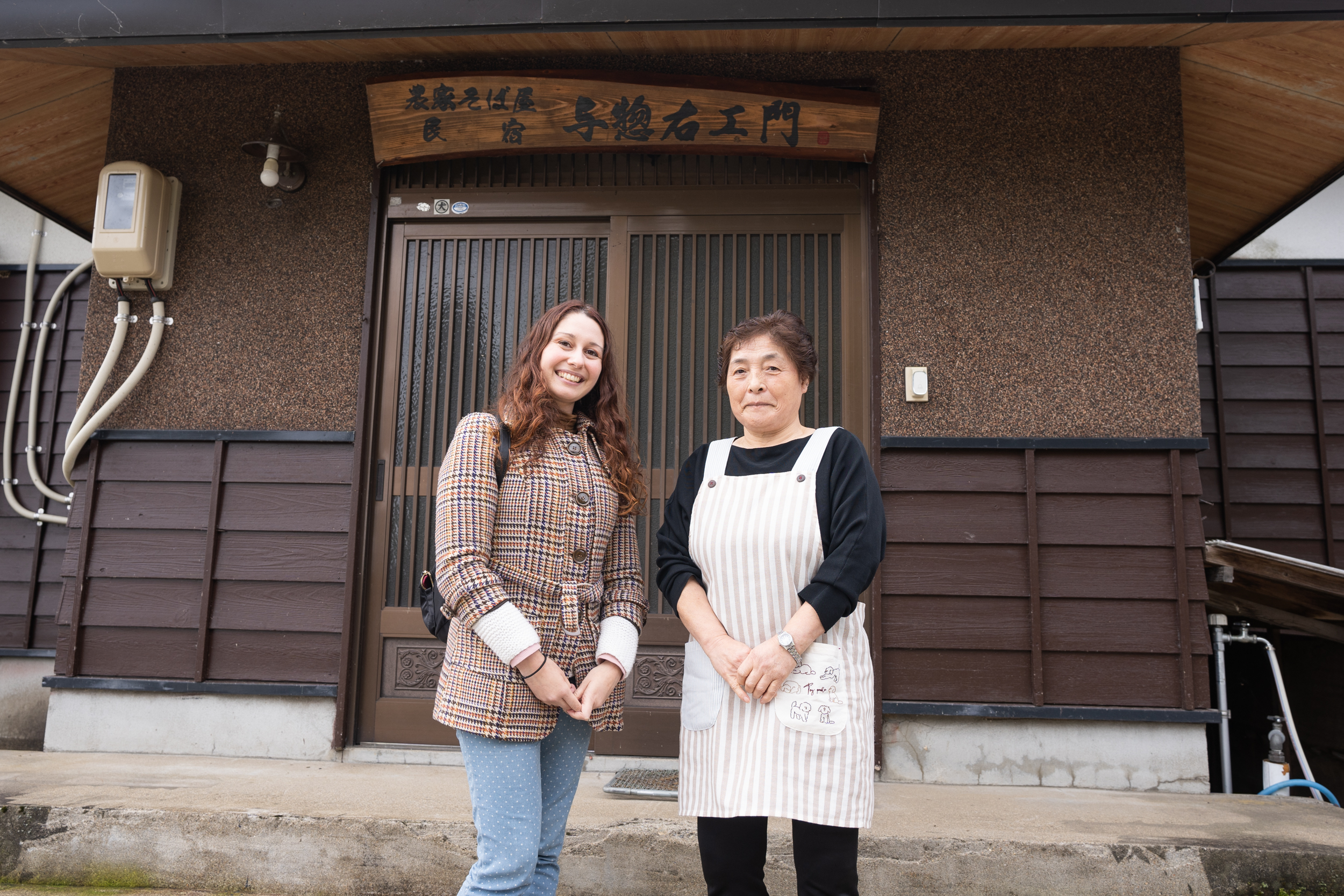
The day will end by preparing your bedding for the night. The tatami room will become your bedroom, where you’ll prepare your futon mattress before falling asleep with the lullaby of the sound of nature just outside your window.
An early morning wake-up breathing in the fresh air and a walk in the field viewing the sunrise with a warm coffee in your hands is definitely the best way to start the day.
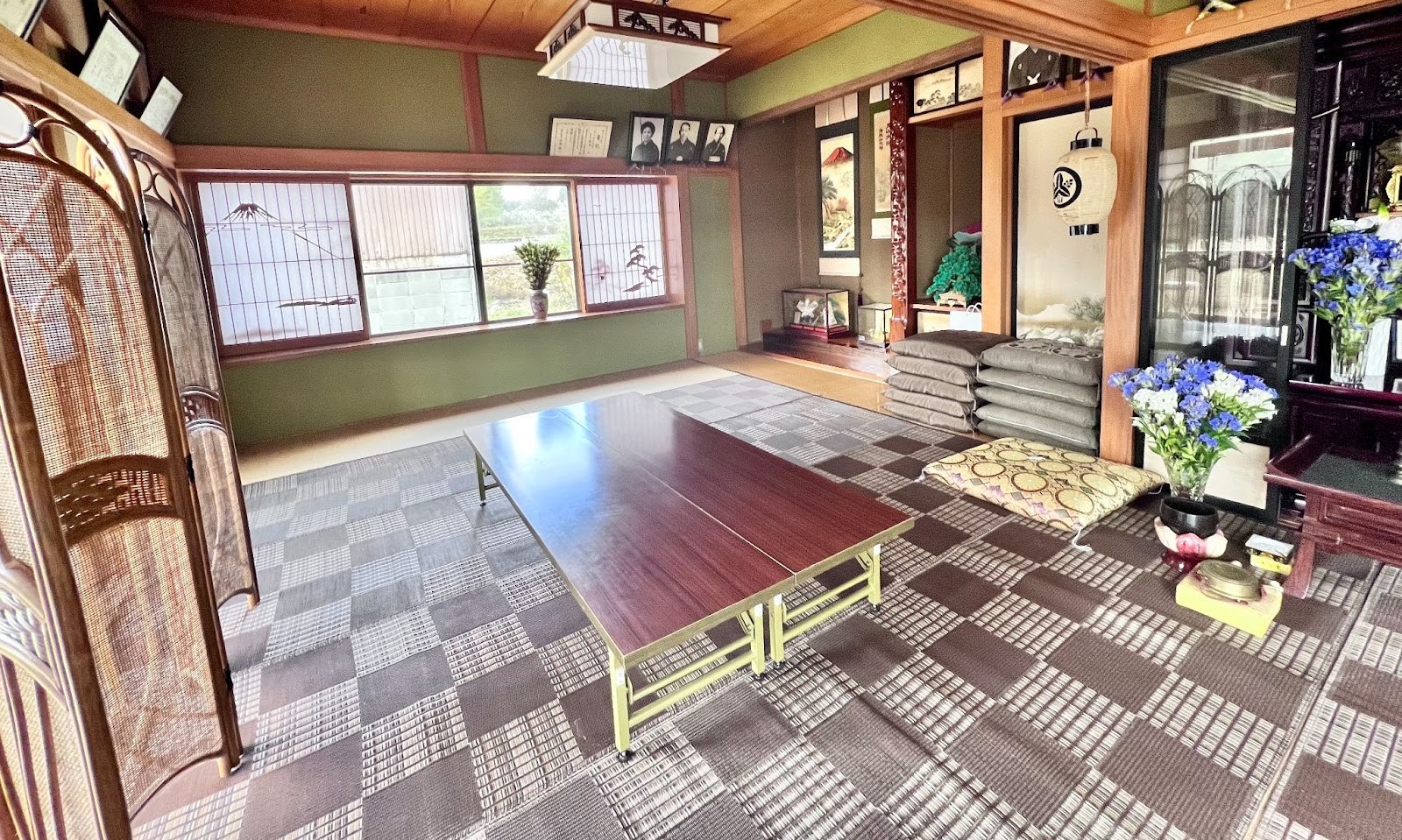
Cooking imoni, a traditional autumn food of Yamagata
Part of the experience of a farm stay in the countryside is learning about Japanese homemade meals; I learned how to make the soul food of Yamagata, called imoni: a meat and vegetable stew eaten typically in the autumn.
Since the main ingredient is the satoimo, imoni is the perfect dish to enjoy the freshly harvested Japanese taro! Different areas of Yamagata have their own traditional imoni, where ingredients may vary, but all of them definitely use the satoimo.
In the Mogami and Murayama area, traditional imoni is made using sweet soy sauce with satoimo, beef, and green onion, while in other areas of Yamagata, ingredients change such as using pork or miso.
Imoni is also a dish which creates a sense of community: in autumn there are “Imonikai”, or events where people join outdoor events where imoni is cooked and they all enjoy their bowls together. What a perfect dish to prepare and enjoy with your host family!
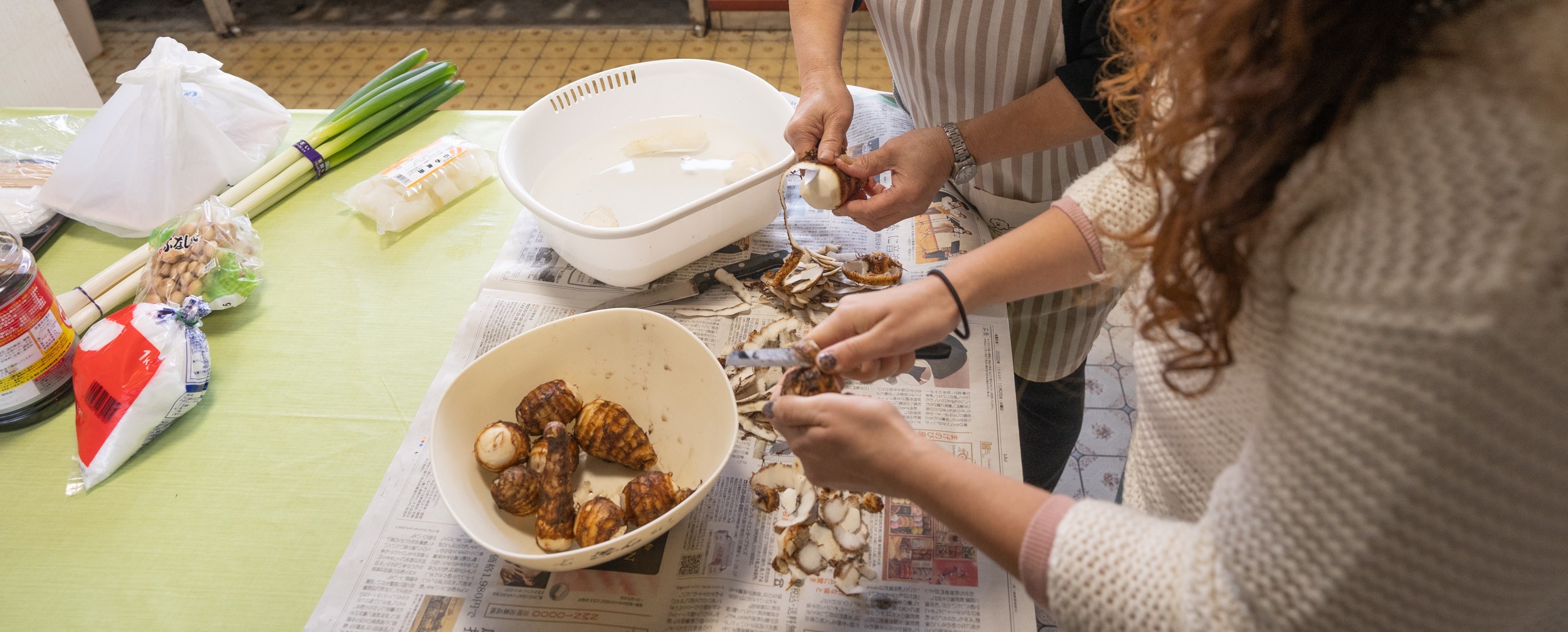
Cooking and tasting this dish from traditional recipes and using the satoimo harvested by yourself is definitely a way to savor every single bite while appreciating the family atmosphere of sharing this warm stew.
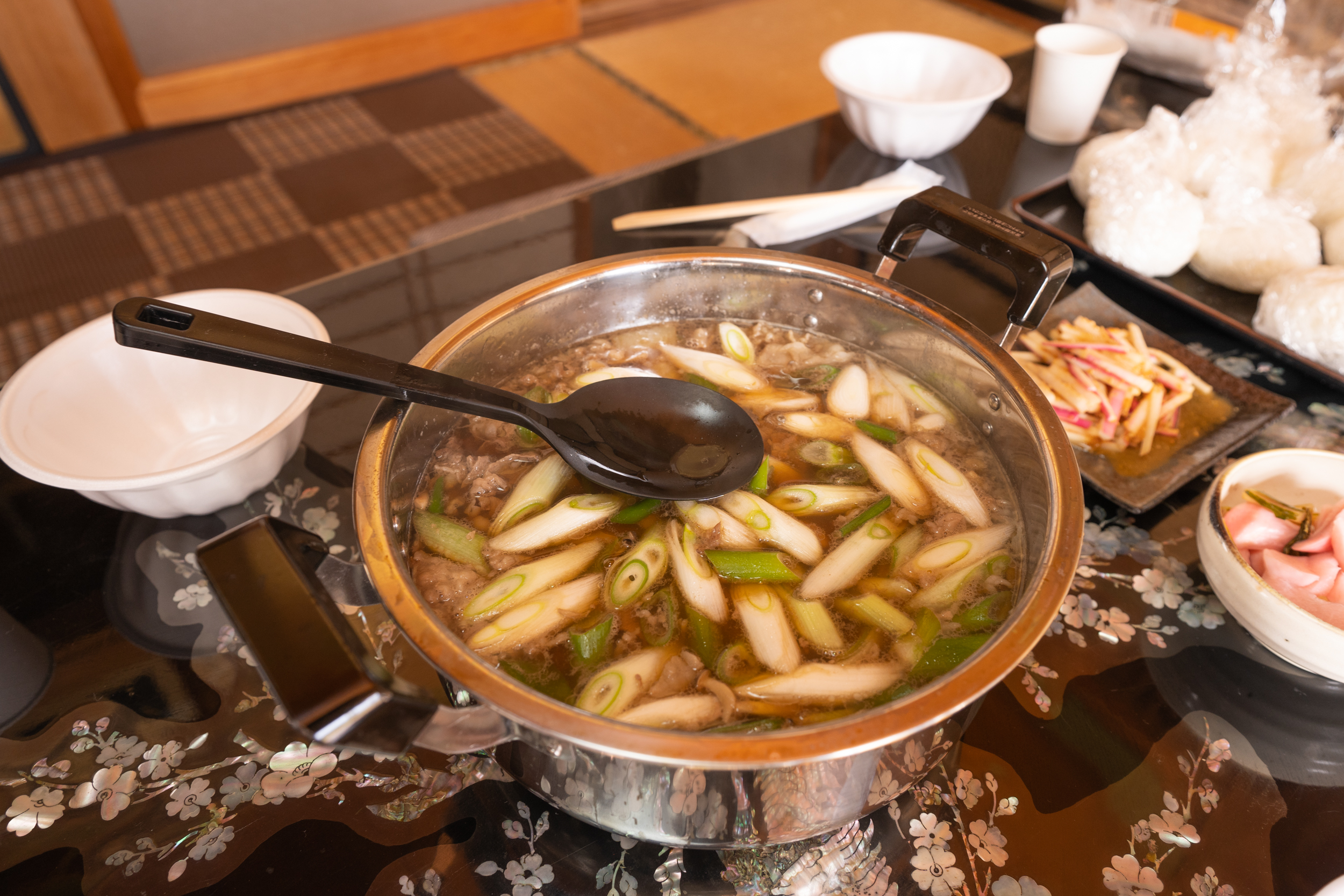
A farm stay experience in the Mogami area is not only a way to experience local culture, but it’s also a sustainable way of traveling, discovering a place from its heart, appreciating the effort of each person in the community, and respecting nature and the environment that provides us with delicious vegetables.
Discover your own farm stay experience with https://thehiddenjapan.com/.